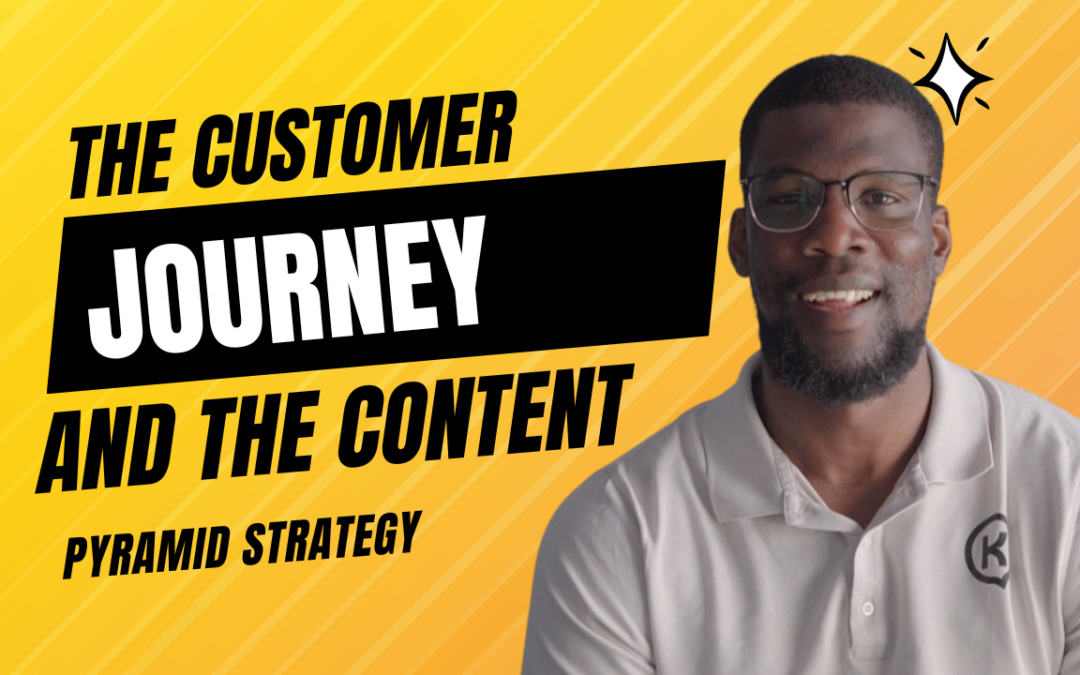Let’s talk about content. Content is essential when we reference social media because without content or a content strategy, there are no social media. Content is the lifeblood of social media. However, when creating content, the recommendation is to create content based on the stages that persons are in their customer’s journey.
There are different variations of the customer’s journey. But, for me, I look at awareness, consideration, conversion, loyalty, and advocacy. Depending on the stage that someone is in their journey determines the type of content that needs to be created. Let’s imagine that somebody has no idea who you are or what you do as a business, no idea what products or services you sell or provide; but then, n that person engages with your content online; they will be in the awareness stage. This means that the content you are creating needs to be content that will give them some perspective and some insights into who you are. Hence, create content that will tell them who you are, what you are about, and what you do.
Now, let’s say that somebody knows about you, they know who you are, then the next stage along their journey, after awareness is consideration. Your audience now knows who you are, but they have a problem. They are looking for a product or service to help solve that problem. And they are now considering different options because they are now aware of you; they will remember that your business provides a solution that might solve their problem. You now become one of the options being considered.
Therefore, at that stage, you must create content that will get them to consider you. Content that speaks to your expertise, looking at testimonials that people might have given you in the past, even reviews. Therefore, you must create content to encourage them to consider you a viable option to solve their problems.
Now that they’re considering you as an option, and they haven’t purchased yet. The next stage in the journey is conversion. And that is now where a purchase is made. You can make the sale or somebody else can. But ultimately, in that stage, the customer is buying something, and you want to ensure that when they purchase, they are buying from you!
Your content now needs to influence the buyer to purchase from you. So, look at reviews and testimonials, or you can do an in-depth review of your products or services. Some people also do product demos at this stage or even free trials.
The final stage is loyalty and advocacy; loyalty is where that customer will be so happy with you (hopefully) that they will keep coming back again and again. Advocacy is now where they are telling people about you and your products and services. Now you need to create content that would encourage customers to tell people about you and your products and services. Maybe you are doing some work in the community; you can share content about that. So at least people can feel good about the fact that they are purchasing from a business that is supporting the wider community.
Let’s shift gears a bit to talk about the content pyramid. The content pyramid is not something I created; the first person I heard about it was Gary Vaynerchuk. And since then, I’ve seen many other content and social media experts speak about or deliver a variation of the content pyramid.
When creating content, I recommend you start with “anchor content” or “pillar content.” The anchor/pillar content is one long-form content from which you can splinter micro-content. What do I mean by that? Let’s imagine you create a 10-minute or 15-minute video, podcast, live video, or long-form blog post, for instance, that becomes the anchor content that you can post, let’s say, on YouTube in the case of a video. The next step is to cut short clips from that 10 to 15-minute video; these clips can be anywhere between one to two minutes. These one to two minutes clips can be shared on Instagram, Facebook, Twitter, TikTok or even LinkedIn.
The next step is to strip the audio from that 10 to 15-minute video, which becomes your podcast if you want to do a podcast. Next, you transcribe that video or audio into text using a platform like otter.ai or another transcription software. You edit the text, and that becomes your blog post (this post you are reading is a transcription from a video I posted two days ago- see below).
From that blog post, you pull out quotes that you use to create graphics which you can now share on different social media platforms, so, as you can see, you only need one long-form content piece (video is my recommendation). You splinter this content, creating different snippets of content you can share.
That is what I call the content pyramid and how I recommend people create content if they do not want to spend a lot of time in content production. So, consider the content pyramid and create content based on the stages people are at on the customer journey.
